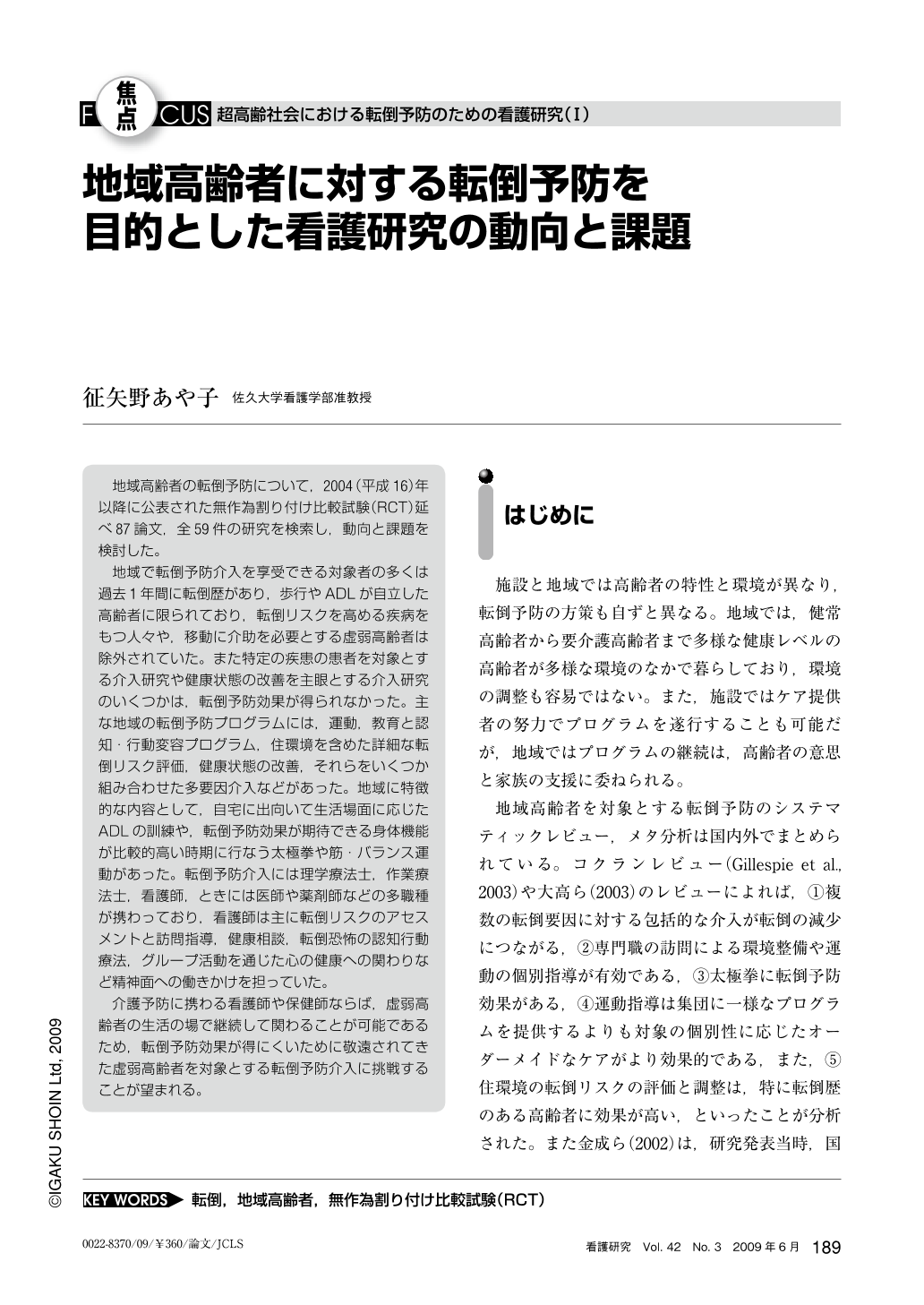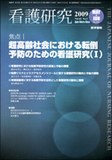Japanese
English
- 有料閲覧
- Abstract 文献概要
- 1ページ目 Look Inside
- 参考文献 Reference
地域高齢者の転倒予防について,2004(平成16)年以降に公表された無作為割り付け比較試験(RCT)延べ87論文,全59件の研究を検索し,動向と課題を検討した。
地域で転倒予防介入を享受できる対象者の多くは過去1年間に転倒歴があり,歩行やADLが自立した高齢者に限られており,転倒リスクを高める疾病をもつ人々や,移動に介助を必要とする虚弱高齢者は除外されていた。また特定の疾患の患者を対象とする介入研究や健康状態の改善を主眼とする介入研究のいくつかは,転倒予防効果が得られなかった。主な地域の転倒予防プログラムには,運動,教育と認知・行動変容プログラム,住環境を含めた詳細な転倒リスク評価,健康状態の改善,それらをいくつか組み合わせた多要因介入などがあった。地域に特徴的な内容として,自宅に出向いて生活場面に応じたADLの訓練や,転倒予防効果が期待できる身体機能が比較的高い時期に行なう太極拳や筋・バランス運動があった。転倒予防介入には理学療法士,作業療法士,看護師,ときには医師や薬剤師などの多職種が携わっており,看護師は主に転倒リスクのアセスメントと訪問指導,健康相談,転倒恐怖の認知行動療法,グループ活動を通じた心の健康への関わりなど精神面への働きかけを担っていた。
介護予防に携わる看護師や保健師ならば,虚弱高齢者の生活の場で継続して関わることが可能であるため,転倒予防効果が得にくいために敬遠されてきた虚弱高齢者を対象とする転倒予防介入に挑戦することが望まれる。
In terms of preventing falls in the community-living older people, we searched a total of 87 literatures ; 59 cases of randomized controlled trial (RCT) published in 2004 and after, and examined their trend and issues.
In the community, most of the older persons who were eligible for receiving the intervention study on fall prevention had experienced falling within a year ; in addition, it was limited to those individuals who were able to independently walk. However, some older people with neurological disease, cardiovascular disease, a diagnosis of dementia were excluded from the intervention trials. Moreover, some of the intervention studies that targeted people with a specific disease or that aimed at improving health status were proven to be not effective in preventing falls. Fall prevention programs in the community mainly contained the following interventions ; physical exercises, education with cognitive and behavioral therapy, a detailed risk assessment of falls including a home hazards and a combinational intervention with multiple factors of the above. With regard to characteristic contents of the program in the community, there was a home visit in order to practice ADL for meeting their own life-style ; besides it was seen that giving them a guidance in physical exercises ; such as Tai-chi for improving balance and muscular strength because fall prevention is expected to be more effective if their physical function is higher. Furthermore, multidisciplinary staffs were involved in the intervention ; such as physical therapists, occupational therapists, nurses, and sometimes doctors and pharmacists. Especially, nurses took on the responsibility of the risk assessment of falling, giving a guidance by home visiting, health counseling, cognitive and behavioral therapy for fear of falling, and psychological group activity.
It is strongly encouraged that nurses or public health nurses address the fall prevention intervention targeting on these vulnerable older adults who have excluded due to its lower effect of fall prevention because nurses may be able to give a continuous care beside them at the site of their daily life.

Copyright © 2009, Igaku-Shoin Ltd. All rights reserved.


